The 2015 Razer Blade Review
by Brett Howse on February 11, 2015 2:00 PM EST- Posted in
- Laptops
- Razer
- Razer Blade
- Notebooks
- GTX970M
System Performance
The upgraded CPU in the 2015 Blade has made a big improvement in processing power. The outgoing model was no slouch, but 400 MHz of both base and boost clocks, and ten more watts of TDP available, the Core i7-4720HQ performs very well. Some may be wondering where the new Intel Broadwell CPUs are, since they have been available since last year. The launch of Broadwell has been very staggered, with the Core M launch at the end of 2014, which are 4.5 watt CPUs, and then the 15 watt dual-core Broadwell U series was launched at CES in January 2015. The higher wattage quad-core parts on the new 14 nm process will not be out for a few months yet. Razer could have stuck with the old 4702HQ model until then, so it was nice to see them offer a speed bump to the 4720HQ at the same price as last year’s model.
So with the speed increase, let us see how the new model performs compared to last year’s model and some other similar notebooks. If you would like to compare the 2015 Razer Blade to any other laptops we have tested, please check out our online comparison tool, Bench.
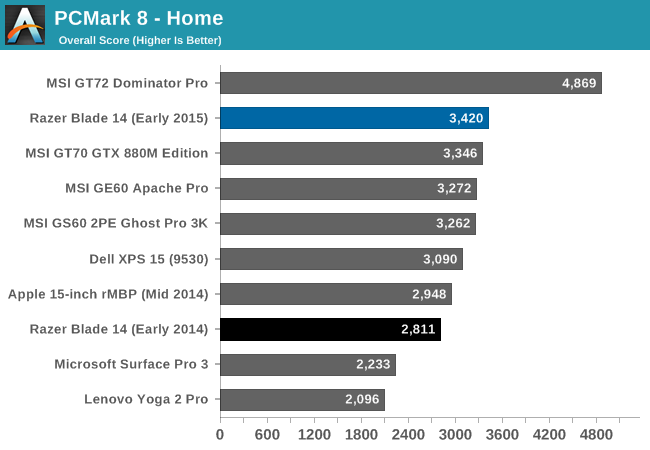
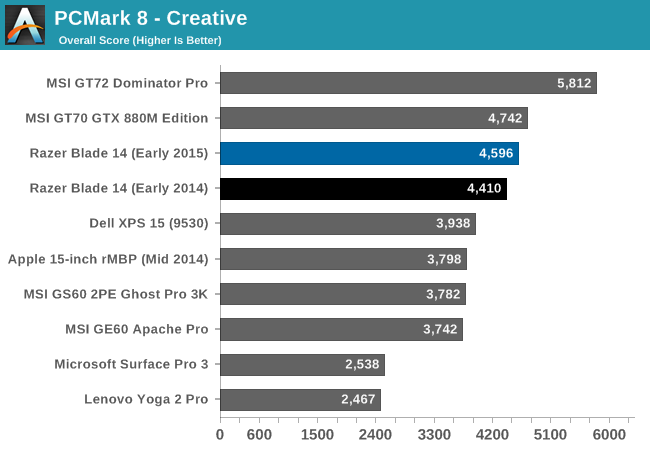
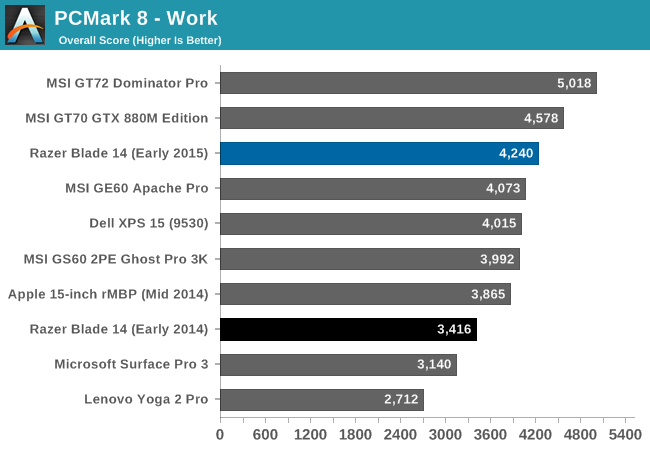
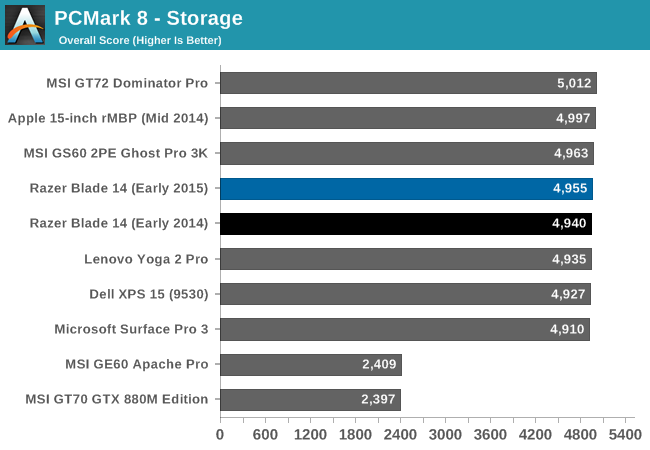
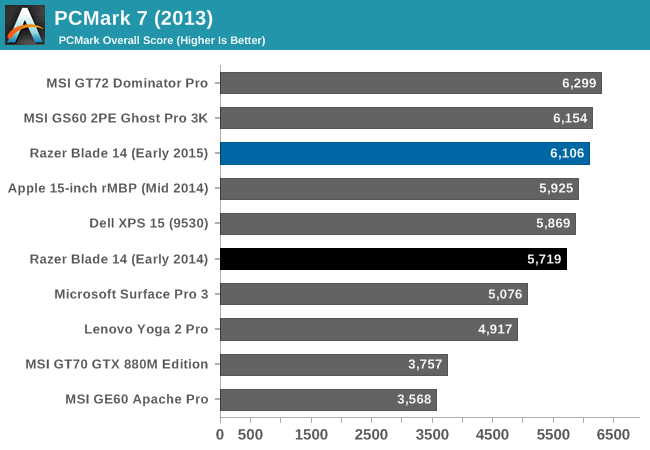
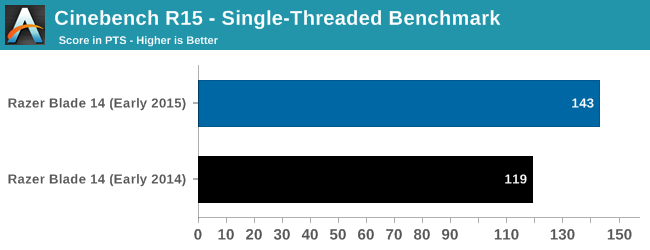
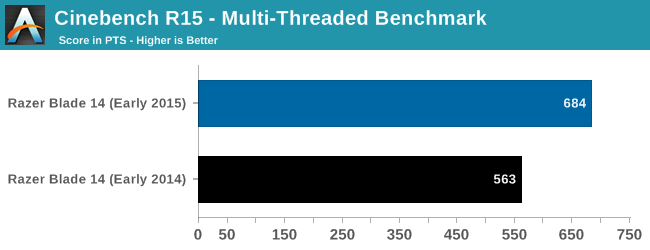
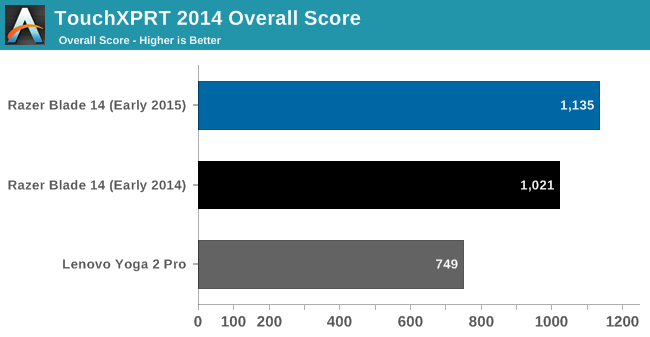
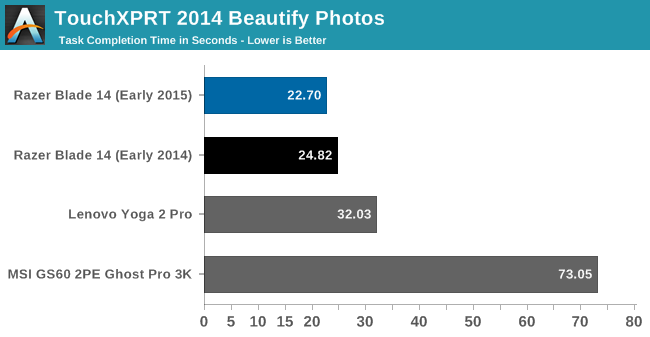
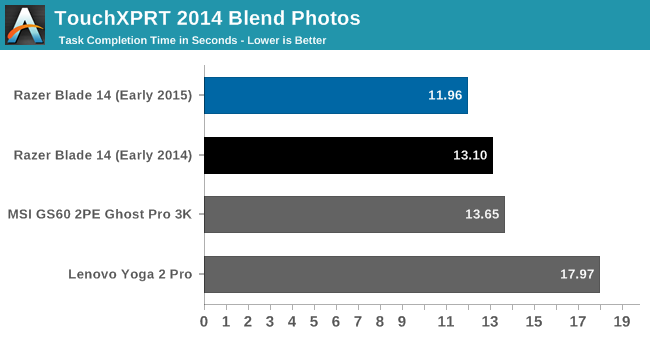
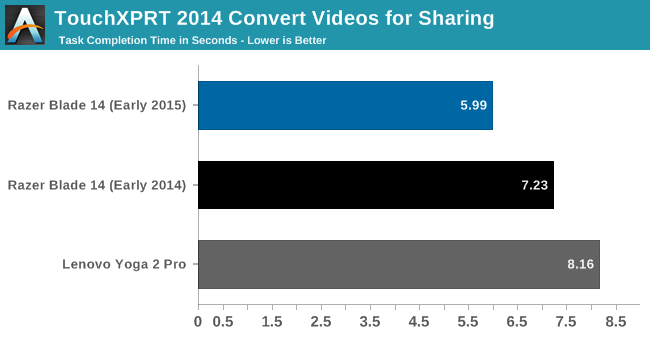
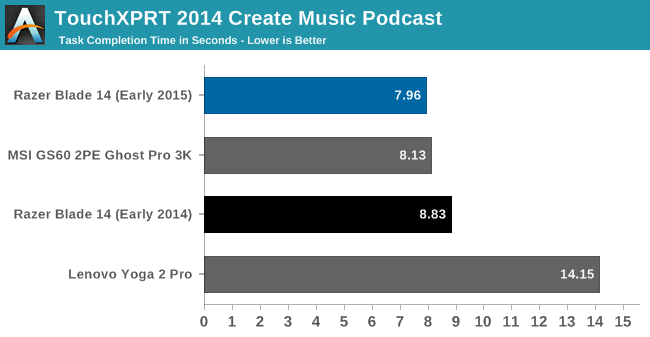
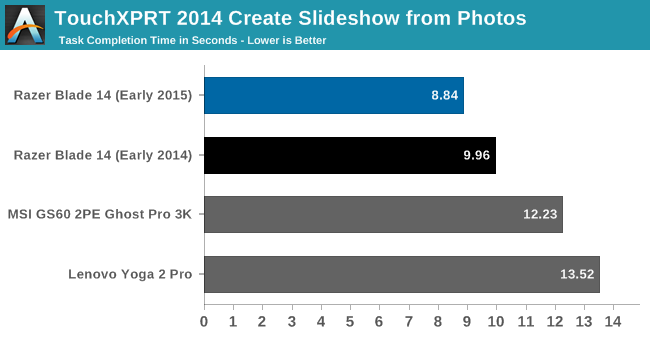
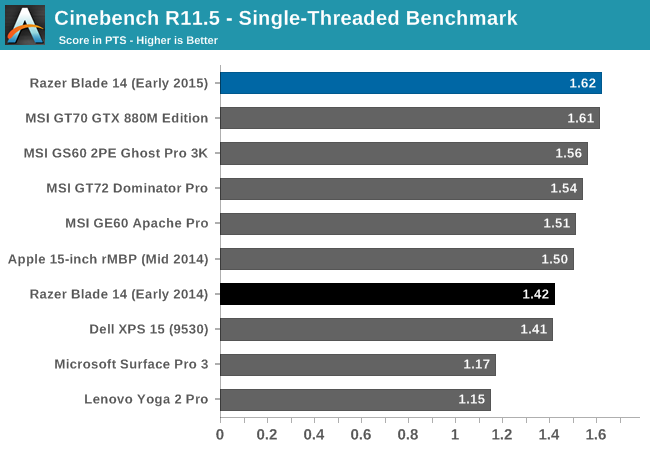
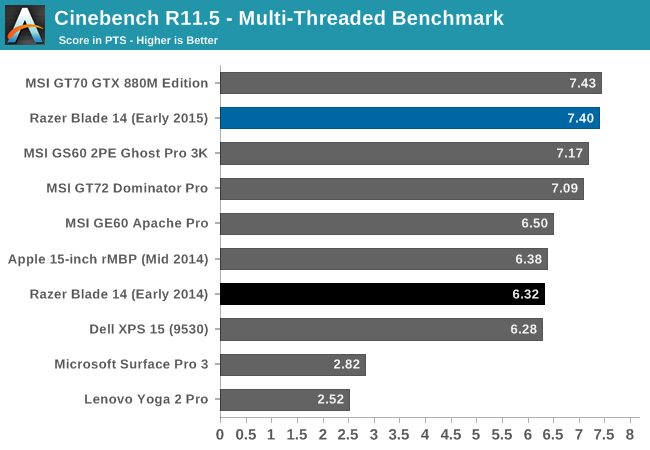
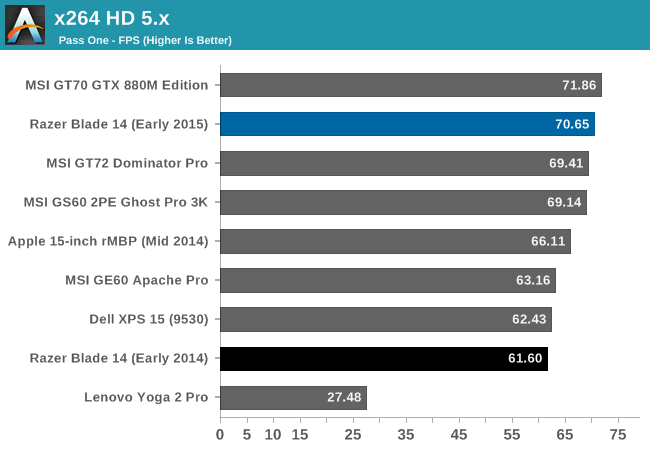
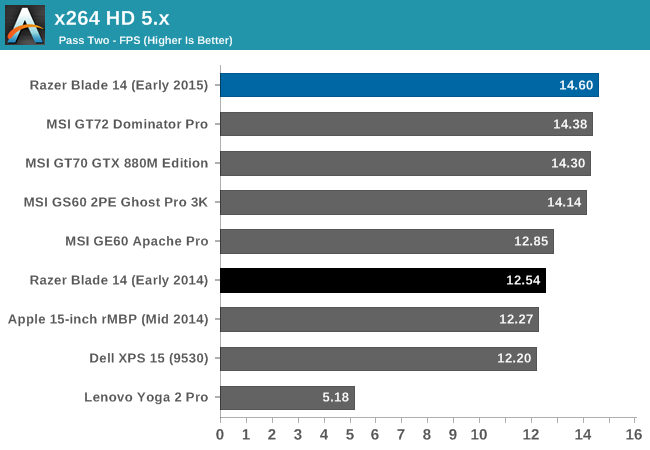
The new CPU and SSD combination make a good improvement here over the 2014 model. All of the system benchmarks have gone up quite a bit with the increase in CPU speed. The 2014 model was good, and the 2015 model is better. The move to a 47 watt CPU has improved all aspects of the Blade. The LiteOn SSD also squeaks past the Samsung model which was in our review unit last year.
Wi-Fi
The Wi-Fi card in the 2015 Blade carries over from last year. This laptop features the Intel Wireless AC-7260 wireless adapter, which is a 2x2:2 card offering a maximum connection speed of 866 Mbps on 802.11ac.

While the card is the same, there have been a couple of driver updates since our last look at the Razer Blade, so the new model scores slightly higher. Wi-Fi performance is good, assuming you have invested in an 802.11ac router. In addition, the Intel card also does double duty as the Bluetooth adapter.










116 Comments
View All Comments
peterfares - Thursday, February 12, 2015 - link
There are lots of issues with HDMI 1.4 and 2560x1440. Most don't seem to be able to do 2560x1440 at 60Hz.http://www.notebookcheck.net/2560x1440-or-2560x160...
Most of these tests were able to get 55Hz after setting a custom resolution. I tried once to get 2560x1440 60Hz out of a laptop with only HDMI and I couldn't do it whereas my laptops with DisplayPort I can just plug in and it works.
close - Thursday, February 12, 2015 - link
It doesn't mimic anything. It's just a good design. It's like saying that all cars mimic the Ford Model T or something. It is a shame indeed that it lack some connectivity but if they actually did study the market and most of their potential customers wanted this it sounds reasonable enough.Jaisah - Thursday, September 3, 2015 - link
The body is almost identical to the rMBP and even the inside (fan positioning, soldered ram and location, speaker position, battery position) looks very similar to the rMPB. Maybe they didn't copy the rMBP but they certainly used it for inspiration :PUplink10 - Wednesday, February 11, 2015 - link
Why do people buy laptops with pricey gimped i7 CPUs, which cost the same as ungimped CPUs. They should make laptop with i5 desktop CPU which is much cheaper but it is not gimped and has the same performance.dragonsqrrl - Wednesday, February 11, 2015 - link
... and a far higher TDP.Oh and the answer to your question: TDP (probably package size as well)
anactoraaron - Wednesday, February 11, 2015 - link
What? Did you just start reading AT? They analyzed this not too long ago. http://www.anandtech.com/show/7287/analyzing-the-p... The higher end quad w/ht i7 laptop chips hold their own against any desktop i5... and at a much lower tdp. I'm not sure how you define gimpedUplink10 - Wednesday, February 11, 2015 - link
They could have higher clocks but also a little higher TDP.DanNeely - Thursday, February 12, 2015 - link
Because at about the same TDP the mobile i7 is faster than the desktop i5. The 47W i7-4720m has a base of 2.6ghz and can turbo to 3.4-3.6. The 45W i5-4690T only has a base of 2.5GHz and tops out at 3.1-3.5 for turbo. The overall TDP between the two chips is closer because the desktop chipset is 4.1W vs 2.7 for the mobile one. To get faster than a baseline mobile i7 you need to go to the 65W S series i5s. Normal laptops don't do that because an extra 20W of TDP will give much better returns most of the time with a faster GPU. You'll occasionally see a desktop CPU it in an 18-19" luggable; but other than in form factor those machines don't really qualify as laptops because they're too big, too heavy, and have too little battery life even at idle to be usable away from a desk.And even at that, in turbo mode the top end end mobile 47W i7-4980HQ is faster than the 88w desktop i5.
Uplink10 - Thursday, February 12, 2015 - link
I thought you generally have laptop plugged in when playing games. And when you do not play games for few hours, you can use a CPU with little higher TDP.Brett Howse - Thursday, February 12, 2015 - link
It's not about battery life. You have to get the heat out. On a desktop PC, the headsink and fan combo is 3-4 times thicker than the entire laptop. Next, look at the cooling solution on a GTX 970 desktop part and then look at the laptop.